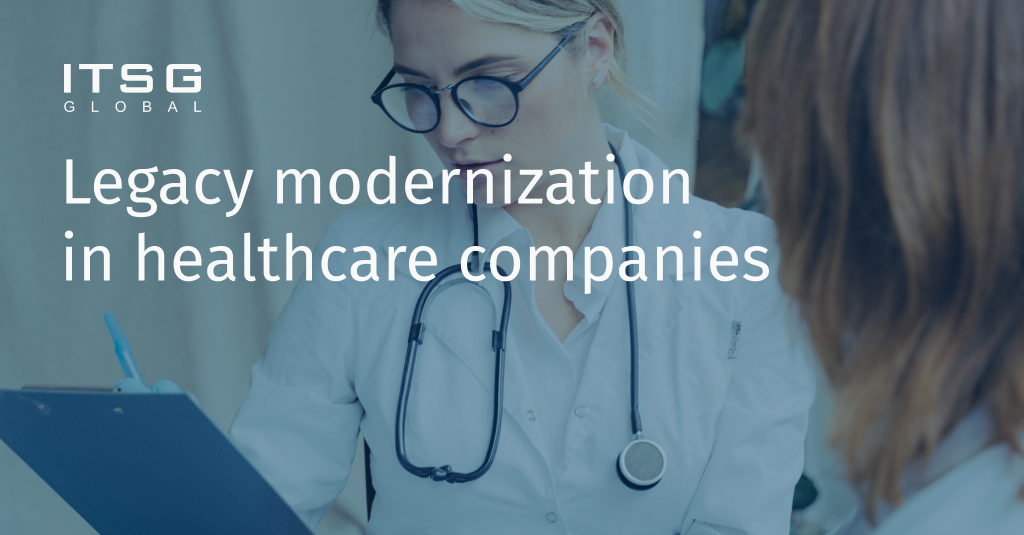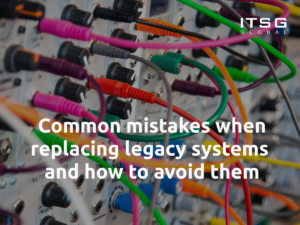2 November 2023

Healthcare remains one of the fastest-growing and crucial industries in the world. Moreover, the 2019 pandemic caused its growth to accelerate even more with new solutions being introduced to keep up with the new reality and its challenges. Digital healthcare brought us to an era when sensors and robots are capable of performing some of the tasks, that would before require going to the doctor personally. That being said, this new medical landscape can serve its purpose effectively only if the IT systems are working as they should be.
Systems owned by healthcare companies are responsible for handling a wide variety of services, all of them crucial for patients’ well-being, such as keeping health records, providing access to e-prescriptions, telemedicine, health information systems, and many more.
As a healthcare company that doesn’t want to fall behind, it’s important to have systems that are going to enhance your client’s experience, which is going to encourage them to stay loyal because of the quality of provided services.
Because of the number of new solutions being implemented as we speak, healthcare providers are now responsible for much more than just treating their patients. There is a possibility that you are operating on a legacy system, that isn’t even that old, it just doesn’t perform as it’s expected.
Legacy systems, by definition, often use outdated technology, which can lead to inefficiencies in data management, patient care, and administrative tasks. It’s possible that you feel like you have to perform too many things manually, there are errors popping up from time to time or specific operations simply take too much time to finish.

As a healthcare provider it’s possible that you don’t own your own IT team and therefore you might not be sure how your systems are actually performing and what is possible to be done on them to make them work better. You might notice some malfunctions, and it’s one side of the problem, but it’s also possible that you have some ideas that you would like to implement, but you are not sure if they are technically possible. And probably they are if you find an IT partner to talk with about your concerns.
WHY IT’S IMPORTANT
If your system has been working fine a while ago, and now it’s just too slow it might be a sign that you’ve become more successful than you think, and considering a bigger workload some of your tasks should be automated, which is going to translate into better efficiency. Working on a legacy system means also that your employees might have problems with introducing new features to the system because it’s too expensive or complicated. Having the system modernized means implementing new functionalities that you have been thinking of, just wasn’t sure how to connect them to the already existing ones.
Modernization of your legacy system might also eliminate your fear of security or workflow matters. The risk of compromising your patient’s health is real and it’s vital to ensure, that your healthcare professionals have access to the information they need to provide top-quality care.
It’s also important to highlight, that legacy systems tend to be vulnerable to security breaches due to outdated security protocols and modernization strengthens data security through encryption, access controls, and regular updates, safeguarding sensitive patient information. Modernized systems can be more easily adapted to meet evolving regulatory standards, reducing the risk of non-compliance and associated penalties.
Another matter is that legacy systems may lack interoperability with other healthcare providers and systems, making it difficult to share patient information. Modernization enables better data exchange between healthcare organizations, improving coordination of care and patient outcomes.
From a business perspective, modernization can lead to cost savings through reduced maintenance, improved resource allocation, and increased operational efficiency. Transformed systems will be capable of accommodating growth and changing needs, and are more flexible in general.
Better Analytics and Decision Support are other factors that should be taken into consideration when thinking about the modernization of your systems. Modern systems provide better data analytics capabilities, which enable healthcare organizations to make data-driven decisions. This, in turn, can lead to improved patient outcomes and more efficient resource allocation.
Finally, it’s going to enhance your patient’s experience. Modernization can lead to smoother, patient-centric processes, such as online scheduling, bill payment, and telemedicine options. And that’s translating into a competitive advantage – companies that are up-to-date with innovations tend to enjoy a better position in the market.
HOW WILL WE KNOW WHAT TO DO?
The answer is simple – we’re going to diagnose your system just as you are diagnosing your patients before starting the treatment. The point is – we can speculate that something is off in your legacy system, but we want to know first which matters are urgent, what has to be fixed as a priority, and if there are any problems that might not be visible (yet), but they are symptoms of something serious going on below the surface. By doing so we can inform you about the condition of your current system and explain what should be done to fix it.
Altogether just because your legacy system is still operating it doesn’t mean it’s not slowing you down. It’s uncertain, consumes a lot of valuable resources, and potentially compromises your patient’s well-being. The upgraded version is going to be more sufficient, easier to manage and is going to generate more value for your company.
In conclusion, legacy modernization in healthcare is essential for ensuring that healthcare organizations can adapt to the changing landscape, provide high-quality patient care, and remain compliant with regulations. Besides improving efficiency and security it also positions healthcare companies for long-term success and competitiveness.
Author: Andrzej Wodnicki, Managing Director at ITSG Global






